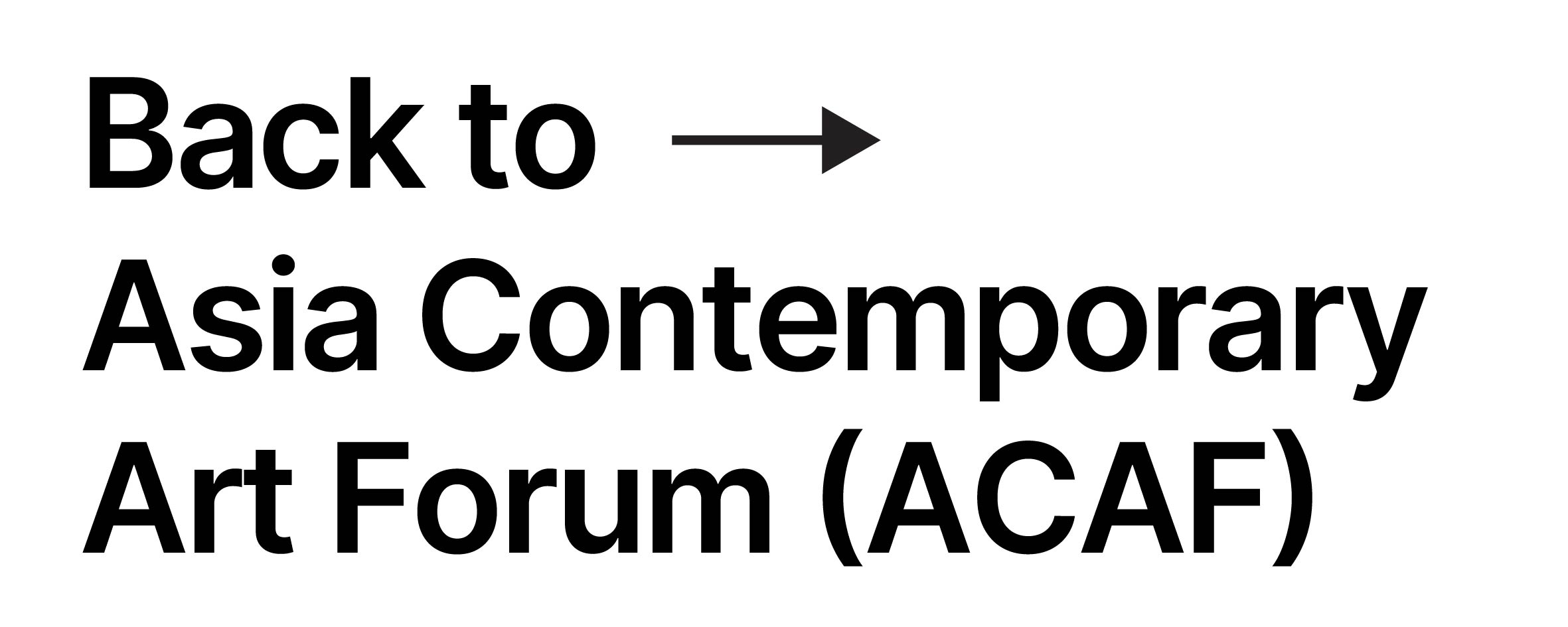A brief history of ACAW
Asia Contemporary Art Week (ACAW) started in 2001 through an independent joint initiative of Asia Society and a group of visionary individuals from leading museums and galleries in New York known as the Asian Contemporary Art Consortium (ACAC). Its goal was to heighten the awareness and visibility of contemporary art practices from Asia within the United States.

The first ACAW edition took place in November 2002, a two-day symposium that marked a major shift away from perceiving art from Asia as derivative of Western art discourses, to that of sharing its critical contributions to the field at large. Renowned New York Times critic, Holland Cotter, called the event “a turning point for the discussion of art from Asia in America.”

From 2006, ACAW expanded its initial focus on East Asia to present artists from less-visible regions, such as South East Asia, Central Asia, and the Middle East. The curatorial and educational platform also welcome mainstream institutions, such as the Museum of Modern Art, Solomon R. Guggenheim Museum, and the Brooklyn Museum of Art, to its consortium of partners and as hosts of ACAW programs.

During the “Asian art bubble” (between 2008 and 2011), numerous galleries from China and India shuttled into New York’s Chelsea and other neighborhoods with impressive new spaces, introducing to New York – for the first time – a large number of artists from diverse regions of Asia. ACAW was at the forefront of contextualizing the scene through a series of collaborative public programs, spotlighting hundreds of artists.

By 2013, ACAW had expanded its consortium of partners to include institutions, galleries, and grassroots arts organizations beyond New York, reflecting the growth within Asia’s expanding art scenes. They included INK Studio, Beijing; Alserkal Avenue, Dubai; The Korean Art Museum, Seoul; Galeri Zilberman, Istanbul; the Mori Art Museum, Tokyo; and M+, Hong Kong.

Over the years, ACAW has grown beyond a week-long event to present a full season of exhibitions by its consortium partners, as well as signature programs curated by ACAW in New York and off-site. Since 2005, these signature programs have filled regional gaps and timelines within the field, bringing lesser known artists from Asia into mainstream spaces.

In 2014, in an effort to establish a new model of exhibition-making beyond the object, ACAW Director Leeza Ahmady conceived FIELD MEETING, an annual forum for arts professionals. FIELD MEETING foregrounds the studio visit’s intimacy and immediacy on a large-communal scale by staging more than 40 creative individuals’ (artists, curators, scholars, and institutional leaders) practices that variously relate to and problematize the cultural, political and geographical parameters of contemporary Asia. More than 300 artists and arts professionals have presented cutting-edge performances, lecture-performances, curatorial talks and discussions over six editions. Hosted by ACAW’s prominent Consortium Partner institutions including Asia Society Museum, The Metropolitan Museum of Art, Solomon R. Guggenheim Museum, SVA Theater, Performa, and Hunter College Art Galleries, FIELD MEETING has seen more than 2,000 arts professionals in attendance to date. In 2019, FIELD MEETING took place off-site for the first time at Alserkal Avenue in Dubai.

In 2016, ACAW launched the online journal, FIELD REVIEW, an extension of FIELD MEETING offering discursive opportunities for writers, curators, and art-historians.

ACAW continues to receive invitations from major institutions, fairs, and biennales in Asia and the US to bring its programs to destinations beyond New York. These are exciting times ahead for ACAW, but even more so for our partners who are leaders and game-changers in the field. Always at the forefront of the scene, ACAW has introduced a generation of emerging artists and art practitioners from Asia to New York and beyond. Many of them have become iconic figures in the international art scene.


